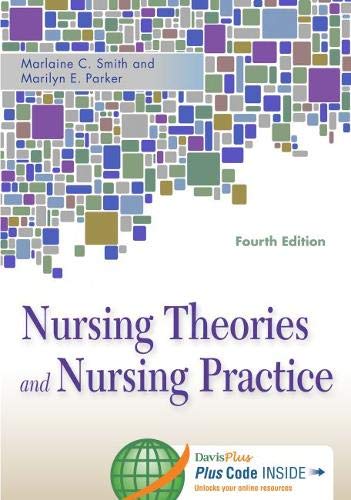Understanding Pathophysiology 5th Edition By Huether McCance – Test Bank
Chapter 11: Cancer in Children
Test Bank
MULTIPLE CHOICE
1.While planning care for children with cancer, which information should the nurse remember? Most childhood cancers originate from the:
a. Placenta
b. Environment
c. Mesodermal germ layer
d. Neural tube
ANS: C
Most childhood cancers originate from the mesodermal germ layer that gives rise to connective tissue, bone, cartilage, muscle, blood, blood vessels, gonads, kidney, and the lymphatic system.
Most childhood cancers originate from the mesodermal germ layer, not the placenta.
Most childhood cancers originate from the mesodermal germ layer, not the environment.
Neural tubes are generally not associated with cancer.
REF: p. 288
2.A child was recently diagnosed with cancer. The diagnosis suggests it is an embryonic tumor. Which of the following characterizes this type of cancer?
a. Commonly occurring
b. Often seen in adults
c. Composed of mature, differentiated cells
d. Usually manifested around age 5
ANS: D
These types of cancers usually manifest around age 5.
These types of cancers are not commonly occurring.
These types of cancers are not commonly seen in adults.
These types of cancers are composed of undifferentiated cells.
REF: p. 288
3.A nurse is preparing to teach the most common malignancy in children. Which malignancy should the nurse discuss?
a. Leukemia
b. Neuroblastoma
c. Wilms tumor
d. Retinoblastoma
ANS: A
The most common malignancy in children is leukemia, accounting for one third.
Tumors of the nervous system are the second most common.
Wilms tumor is less frequently occurring.
Retinoblastoma is less frequently occurring.
REF: p. 288
4.A 3-year-old female was diagnosed with Wilms tumor. This disease is a tumor of the:
a. Kidney
b. Brain
c. Bone marrow
d. Liver
ANS: A
Wilms tumor is a tumor found in the kidney.
Wilms tumor is a tumor found in the kidney, not the brain.
Wilms tumor is a tumor found in the kidney, not the bone marrow.
Wilms tumor is a tumor found in the kidney, not the liver.
REF: p. 288
5.A couple brings their child to his primary care provider for a checkup. The child has Down syndrome, and the couple is concerned about other diseases that could afflict the child. The primary care provider explains that young children with Down syndrome are at higher risk for developing:
a. Nephroblastoma
b. Rhabdomyosarcoma
c. Leukemia
d. Retinoblastoma
ANS: C
One of the more recognized syndromes is the association of trisomy 21, Down syndrome, and with an increased susceptibility to acute leukemia.
One of the more recognized syndromes is the association of trisomy 21, Down syndrome, and with an increased susceptibility to acute leukemia, not nephroblastoma.
One of the more recognized syndromes is the association of trisomy 21, Down syndrome, and with an increased susceptibility to acute leukemia, not rhabdomyosarcoma.
One of the more recognized syndromes is the association of trisomy 21, Down syndrome, and with an increased susceptibility to acute leukemia, not retinoblastoma.
REF: p. 290
6.A newborn male is born with heart failure. Three weeks later he receives a heart transplant. Which of the following is he at the highest risk for developing?
a. Leukemia
b. Liver cancer
c. Pancreatic cancer
d. Burkitt lymphoma
ANS: A
Organ transplant places the child at risk for leukemia.
Organ transplant places the child at risk for leukemia, not liver cancer.
Organ transplant places the child at risk for leukemia, not pancreatic cancer.
Organ transplant places the child at risk for leukemia, not Burkitt lymphoma.
REF: p. 290
7.A 40-year-old female developed adenocarcinoma of the vagina. Which of the following is the most likely cause of her cancer?
a. Rb gene mutation
b. Prenatal exposure to diethylstilbestrol (DES)
c. Prenatal exposure to solvents
d. Prenatal exposure to radiation
ANS: B
The patient with adenocarcinoma of the vagina experienced prenatal exposure to DES.
The patient with adenocarcinoma of the vagina experienced prenatal exposure to DES, not Rb gene mutation.
The patient with adenocarcinoma of the vagina experienced prenatal exposure to DES, not solvents.
The patient with adenocarcinoma of the vagina experienced prenatal exposure to DES, not radiation.
REF: p. 291
8.A 16-year-old male with aspirations of becoming a bodybuilder spends 3 hours a day in the gym. Five years later he develops hepatocellular carcinoma. Which of the following is the most likely cause of the cancer?
a. Immunosuppressive agents
b. Cytotoxic agents
c. Anabolic steroids
d. A viral infection
ANS: C
A history of anabolic steroids places the patient at risk for hepatocellular carcinoma.
A history of anabolic steroids, not immunosuppressive agents, places the patient at risk for hepatocellular carcinoma.
A history of anabolic steroids, not cytotoxic agents, places the patient at risk for hepatocellular carcinoma.
A history of anabolic steroids, not a viral infection, places the patient at risk for hepatocellular carcinoma.
REF: p. 291
9.The most common tissue type of cancer occurring after adolescence is:
a. Sarcoma
b. Squamous cell
c. Carcinoma
d. Neuromas
ANS: C
The most common tissue type after adolescence is carcinoma.
The most common tissue type after adolescence is carcinoma, not sarcoma.
The most common tissue type after adolescence is carcinoma, not squamous cell.
The most common tissue type after adolescence is carcinoma, not neuromas.
REF: p. 288













Reviews
There are no reviews yet.